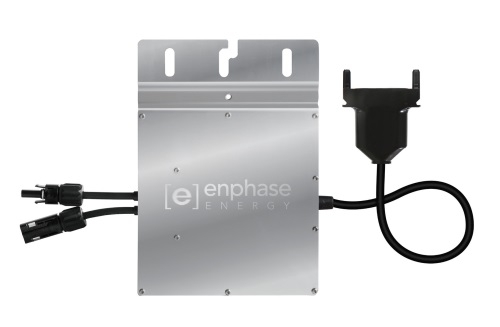
Grid tied inverters convert the DC power from the solar module(s) to the AC power your home appliances are powered by. While off-grid inverters send extra electricty to batteries, grid tied inverters send extra energy produced back to the utility grid.
Grid tied inverters come in two types; string inverters and micro-inverters.
STRING-INVERTERS: Are fed by several solar modules wired in groups. These groups we call strings. The modules are wired in series, not parallel. When wired in series, voltage increases. All inverters have a "voltage window" String inverters have higher voltages 300VDC-550VDC is common. Part of solar designing is figuring out how many modules it takes to provide the right amount of power to run a given inverter. Most manufacturers have online "stringing calculators" on their support pages of their corporate website.
MICRO-INVERTERS: Are fed by just a single solar module. A micro-inverter system uses a long "trunk cable" with evenly spaced sockets for microinverters to plug-in. The micro-inverters are mounted to the racking system under each solar module. Designing micro-inverter systems is very easy becasue there's no stringing rules. The granualarity of system design is down to the individual modules This is partly why they are so popular. One of the most fantastic things about micro-inverters is there ability to reduce the effects of shading. Note that on a $/watt the micro-inverters are ABOUT twice as much. So be sure your project requires the value of micro-inverters before blindly choosing them.
RECOMMENDATION: If you have tall buildings or trees near your roof, shading may become an issue. With a string inverter if one or two panels get shaded it can affect the entire string by as much as half of its total performance. With micro-inverter panels it is only the shaded ones that are affected while the rest of the system keeps performing.
 Solar Kit Deals
Solar Kit Deals


